- Why Petunia Seedlings are Popular in 2023
- 1. Wide Range of Colors and Varieties
- 2. Long Blooming Period
- 3. Easy to Grow
- 4. Low Maintenance
- 5. Versatility in Design
- 6. Attracts Pollinators
- 7. Cost-Effective
- 8. Excellent Cut Flowers
- Benefits of Growing Petunia Seedlings
- Choosing the Right Petunia Seeds
- Types of Petunia Seeds
- Purchasing Seeds
- Seed Packet Information
- Storing Seeds
- Factors to Consider When Selecting Petunia Seeds
- 1. Variety
- 2. Growing conditions
- 3. Flower color and size
- 4. Growth habit
- 5. Disease resistance
- 6. Seed quality
- Where to Buy Quality Petunia Seeds
- 1. Local nurseries and garden centers
- 2. Online seed suppliers
- 3. Seed catalogs
- 4. Seed exchanges and gardening forums
- Preparing Soil for Petunia Seedlings
- Soil Composition and pH for Petunia Seedlings
- Soil Composition
- pH Level
- Additional Tips
- Steps for Preparing Soil for Petunia Seedlings
- Planting Petunia Seeds
- Choose the Right Seeds
- Start Indoors
- Sow the Seeds
- Provide the Right Conditions
- Transplanting Seedlings
- Care and Maintenance
- Conclusion
- When and How to Plant Petunia Seeds
- 1. Determine the Ideal Time
- 2. Prepare the Growing Medium
- 3. Sow the Seeds
- 4. Provide the Right Conditions
- 5. Watering and Care
- 6. Transplanting Seedlings
- 7. Hardening Off and Outdoor Planting
- Questions and Answers:
- What are the best petunia seedling varieties to grow in 2023?
- How do I start petunia seedlings indoors?
- What are some common mistakes to avoid when growing petunia seedlings?
- Can I use a seedling heat mat to help germinate petunia seeds?
- How long does it take for petunia seedlings to bloom?
- Videos: Why Do Cuttings Fail? Propagation Tips
Growing petunia seedlings can be a rewarding and fulfilling experience for any gardener, whether you are a beginner or an experienced enthusiast. Petunias are popular annual flowers that come in a wide range of colors and varieties, making them a versatile choice for adding beauty and color to your garden.
In this article, we will provide you with expert tips and techniques to help you successfully grow petunia seedlings in 2023. From selecting the right seeds and containers to providing the optimal growing conditions and caring for your seedlings as they develop, we will guide you through each step of the process.
Selecting the right seeds: Choosing the right petunia seeds is essential for successful germination and healthy growth. Look for reputable seed suppliers and choose seeds that are fresh, disease-free, and of high quality. Consider the specific requirements of the petunia variety you wish to grow, such as sun exposure, soil type, and desired flower color.
Providing optimal growing conditions: Petunias thrive in full sun, so choose a location in your garden that receives at least 6-8 hours of direct sunlight per day. Prepare the soil by removing any weeds or debris and adding organic matter for improved drainage and fertility. Petunias prefer well-drained soil with a slightly acidic pH between 5.5 and 6.5.
Caring for your seedlings:
Once your petunia seedlings have sprouted, it is important to provide them with proper care to ensure healthy growth. Water your seedlings regularly, keeping the soil moist but not waterlogged. Fertilize every two weeks with a balanced liquid fertilizer to promote strong root development and abundant flowering.
In conclusion, successfully growing petunia seedlings requires careful attention to detail and adherence to proper techniques. By selecting the right seeds, providing optimal growing conditions, and caring for your seedlings as they develop, you can enjoy beautiful, vibrant petunias in your garden throughout the 2023 growing season.
Why Petunia Seedlings are Popular in 2023
Petunia seedlings have remained popular in 2023 due to their vibrant and colorful blooms, ease of cultivation, and versatility in garden and landscape design. Here are some reasons why petunia seedlings continue to be a favorite choice among gardeners:
1. Wide Range of Colors and Varieties
Petunias are known for their abundant blooms that come in a wide variety of colors, including vibrant reds, pinks, purples, blues, and whites. There are also various patterns and color combinations available, allowing gardeners to create stunning floral displays in their gardens.
2. Long Blooming Period
Petunias offer extended periods of blooming throughout spring and summer, adding color to the garden for several months. This extended blooming period makes them a popular choice for garden borders, hanging baskets, and container gardens.
3. Easy to Grow
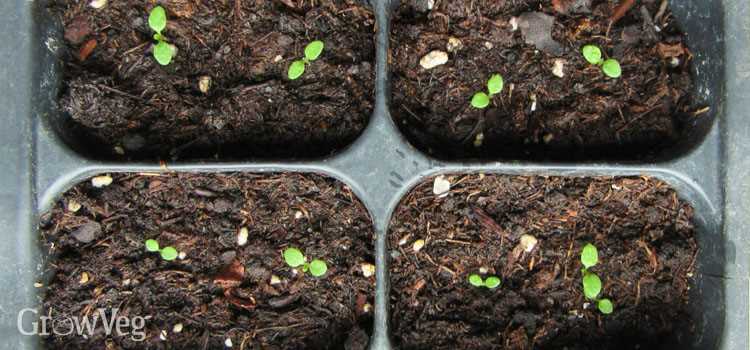
Even beginner gardeners can successfully grow petunia seedlings, as they are relatively easy to cultivate. Petunias can be grown from seed or purchased as seedlings, and they thrive in full sun and well-draining soil. With proper care, petunias can quickly establish and provide stunning blooms.
4. Low Maintenance
Petunias are low maintenance plants that require minimal care. They are tolerant of drought conditions and only need regular watering during dry spells. Petunias also have good disease resistance, making them a hassle-free choice for gardeners.
5. Versatility in Design
Whether you want to create a formal garden, a cottage garden, or a modern landscape, petunias can adapt to various design styles. They can be used as bedding plants, in hanging baskets, window boxes, or as a colorful border around other plants. The versatility of petunias makes them a popular choice for both experienced and novice gardeners.
6. Attracts Pollinators
Petunias produce nectar-rich flowers that attract pollinators such as bees and butterflies. By including petunias in your garden, you are not only adding beauty but also providing a valuable food source for beneficial insects.
7. Cost-Effective
Compared to many other flowering plants, petunias are relatively inexpensive. They are readily available as seeds or seedlings, making them a cost-effective choice for gardeners on a budget.
8. Excellent Cut Flowers
Petunias make excellent cut flowers, adding beauty to indoor floral arrangements. Their long stems and vibrant blooms can brighten up any room and provide a fragrant and colorful centerpiece.
In conclusion, the popularity of petunia seedlings in 2023 can be attributed to their wide range of colors, long blooming period, ease of cultivation, low maintenance, versatility in design, attraction of pollinators, cost-effectiveness, and their usefulness as cut flowers. These qualities make petunias a beloved choice among gardeners, allowing them to create stunning floral displays and enhance the beauty of their outdoor spaces.
Benefits of Growing Petunia Seedlings
- Vibrant and Colorful Displays: Growing petunia seedlings allows you to enjoy vibrant and colorful blooms in your garden. Petunias come in a wide range of colors, including shades of pink, purple, red, and white, providing a beautiful visual display.
- Easy to Grow: Petunia seedlings are relatively easy to grow, making them a great choice for beginner gardeners. With proper care and attention, these seedlings can thrive in various climates and environments, making them versatile and adaptable.
- Quick Results: Petunia seedlings tend to grow and bloom relatively quickly compared to other plants. This fast growth rate allows you to enjoy their beautiful flowers in a relatively short period, providing instant gratification to gardeners.
- Versatile Use: Petunias can be grown in various settings, including flower beds, containers, hanging baskets, or as ground cover. Their versatility makes them suitable for different garden designs and allows you to experiment with different planting options.
- Attract Pollinators: Petunias produce nectar-rich blooms that attract pollinators, such as bees and butterflies, to your garden. By growing petunias, you can contribute to the health and well-being of pollinators, promoting a more biodiverse and sustainable environment.
- Low Maintenance: Once established, petunia seedlings require minimal maintenance. They are relatively drought-tolerant and only need regular watering, occasional pruning, and deadheading to prolong flowering. Their low maintenance nature makes them a convenient choice for busy gardeners.
- Great for Mass Planting: Petunias are known for their ability to create a mass planting effect due to their compact growth habit. Planting petunia seedlings in groups or rows can create a stunning visual impact in your garden, whether as a backdrop or as a focal point.
- Long-Lasting Blooms: Petunia flowers have a relatively long blooming period, providing continuous color and beauty throughout the growing season. With regular care, petunias can keep producing flowers from spring until the first frost, extending the enjoyment of their blooms.
- Cost-Effective: Growing petunia seedlings from seeds can be a cost-effective option compared to buying established plants. Seeds are generally more affordable and can yield a significant number of seedlings, allowing you to fill your garden with colorful petunias without breaking the bank.
Choosing the Right Petunia Seeds
When it comes to growing petunia seedlings in 2023, choosing the right seeds is crucial for success. Whether you’re a beginner or an experienced gardener, selecting high-quality petunia seeds is the first step towards vibrant and healthy plants.
Types of Petunia Seeds
There are several types of petunia seeds available on the market, each with its unique characteristics. Understanding the differences can help you choose the one that matches your preferences and growing conditions:
- Grandiflora: These petunias are known for their large, showy blooms and come in a wide range of colors. They thrive in full sun and prefer well-draining soil.
- Multiflora: Multiflora petunias produce smaller flowers but are highly prolific. They are more tolerant of adverse weather conditions and are often used in hanging baskets and containers.
- Milliflora: If you’re looking for petite petunias with tiny flowers, milliflora varieties are perfect. They are excellent for edging, borders, and filling in gaps in flowerbeds.
- Spreading: Spreading petunias have a trailing habit, making them ideal for ground covers, hanging baskets, or cascading over walls and fences.
Purchasing Seeds
When buying petunia seeds, it’s essential to choose a reputable supplier to ensure you get high-quality seeds. Look for companies or nurseries that specialize in petunia seeds or have a good reputation for providing reliable and fresh seeds.
Consider factors such as seed viability, germination rate, and any additional features or benefits offered by the seed supplier. Reading customer reviews and checking for certifications can also help you make an informed decision.
Seed Packet Information
Seed packets provide valuable information that can guide you in selecting the right petunia seeds. Look for details such as:
- Planting instructions: This includes information on seed depth, spacing, and recommended growing conditions.
- Germination time: Different petunia varieties have varying germination times. Knowing this in advance can help you plan your planting schedule.
- Blooming time: Petunias can bloom at different times, depending on the variety. Choose seeds that align with your desired bloom period.
- Height and spread: Consider the mature size of the petunia plants to ensure they fit well within your garden or containers.
Storing Seeds
If you’re not planning to use all the petunia seeds at once, proper storage is crucial for maintaining their viability. Store seeds in a cool, dry place away from direct sunlight and extreme temperature fluctuations. Using airtight containers or seed envelopes can help prolong their shelf life.
Remember to label the containers with the seed variety and date of purchase to keep track of their freshness.
By carefully selecting the right petunia seeds, you can ensure a successful and rewarding growing experience in 2023. Consider the different types, purchase from reputable suppliers, and pay attention to the information provided on seed packets. With proper storage and care, your petunia seedlings will thrive and provide colorful blooms throughout the season.
Factors to Consider When Selecting Petunia Seeds
When it comes to growing petunia seedlings, the first and most important step is selecting the right seeds. Here are some key factors to consider when choosing petunia seeds:
1. Variety
Petunias come in a wide range of varieties, each with its own unique characteristics. Consider the purpose and location of your petunias to determine the best variety for your needs. Some common varieties include grandiflora, multiflora, and wave petunias.
2. Growing conditions
Petunias require specific growing conditions to thrive. Consider factors such as sunlight, temperature, and soil type when selecting seeds. Some varieties are more tolerant of shade or heat, while others prefer cooler temperatures.
3. Flower color and size
The color and size of petunia flowers can vary significantly between varieties. Consider your aesthetic preferences and the overall look you want to achieve when choosing seeds. Petunias come in a wide range of colors, including pink, purple, white, and bicolor options.
4. Growth habit
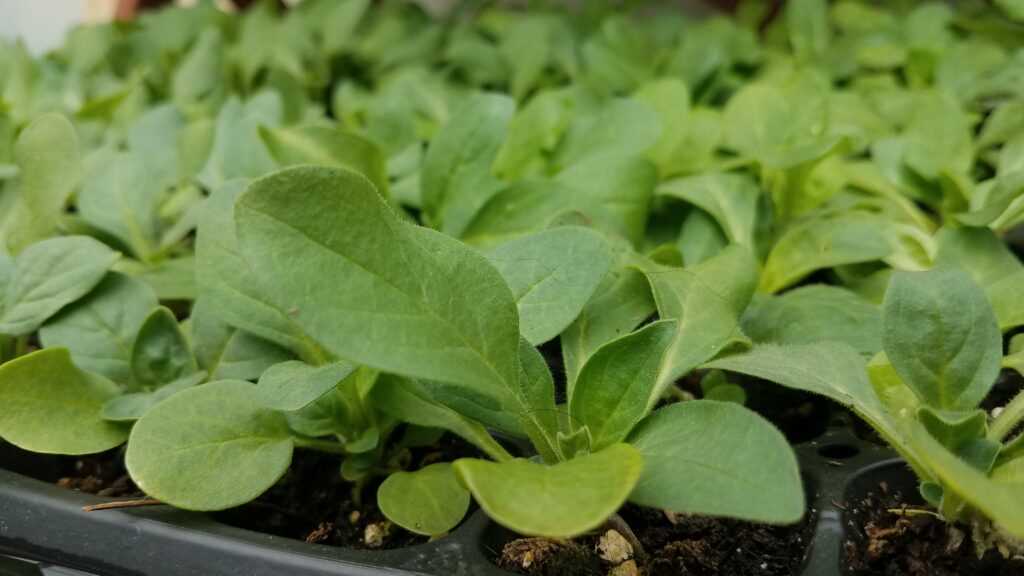
Some petunia varieties have a trailing or spreading growth habit, while others have a more upright form. Depending on your gardening space and design, you may want to select a variety that will fit your needs. Trailing petunias are great for hanging baskets and containers, while upright varieties work well in garden beds.
5. Disease resistance
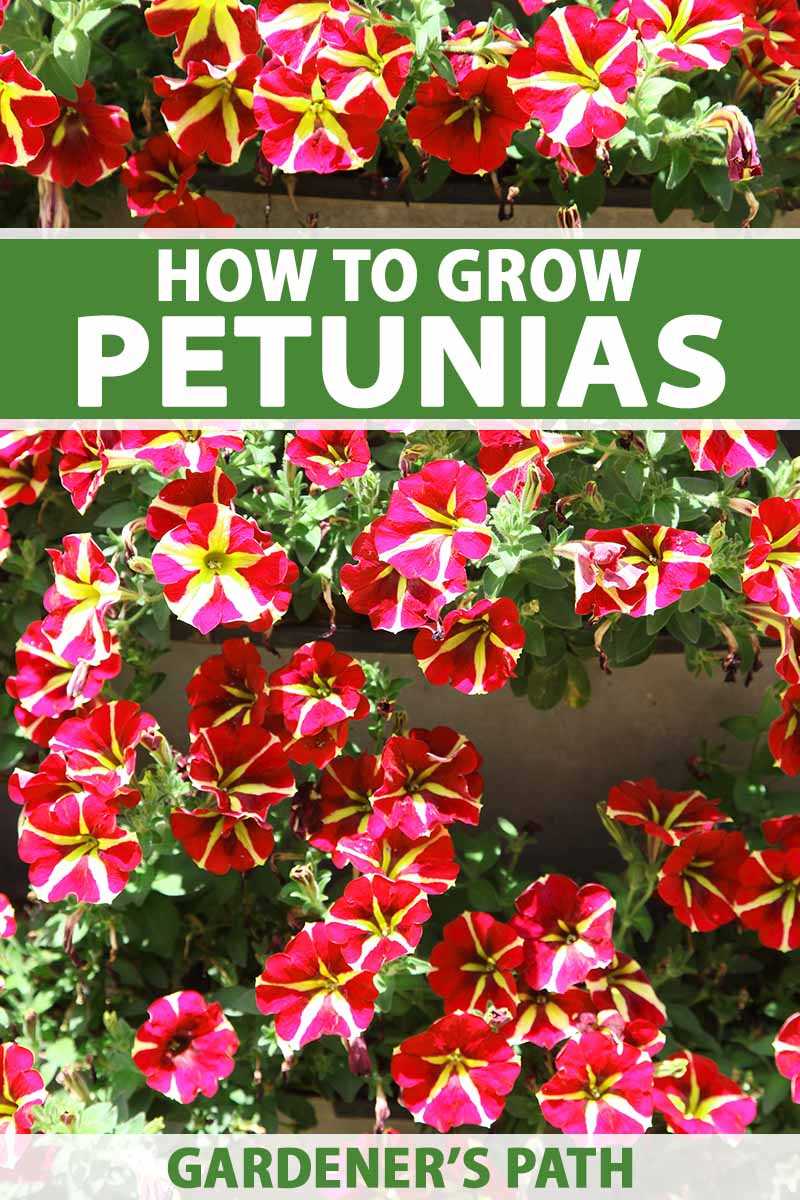
Certain petunia varieties are more resistant to common diseases such as powdery mildew or botrytis. Check the seed packet or product description to see if the variety you are considering has any disease resistance.
6. Seed quality
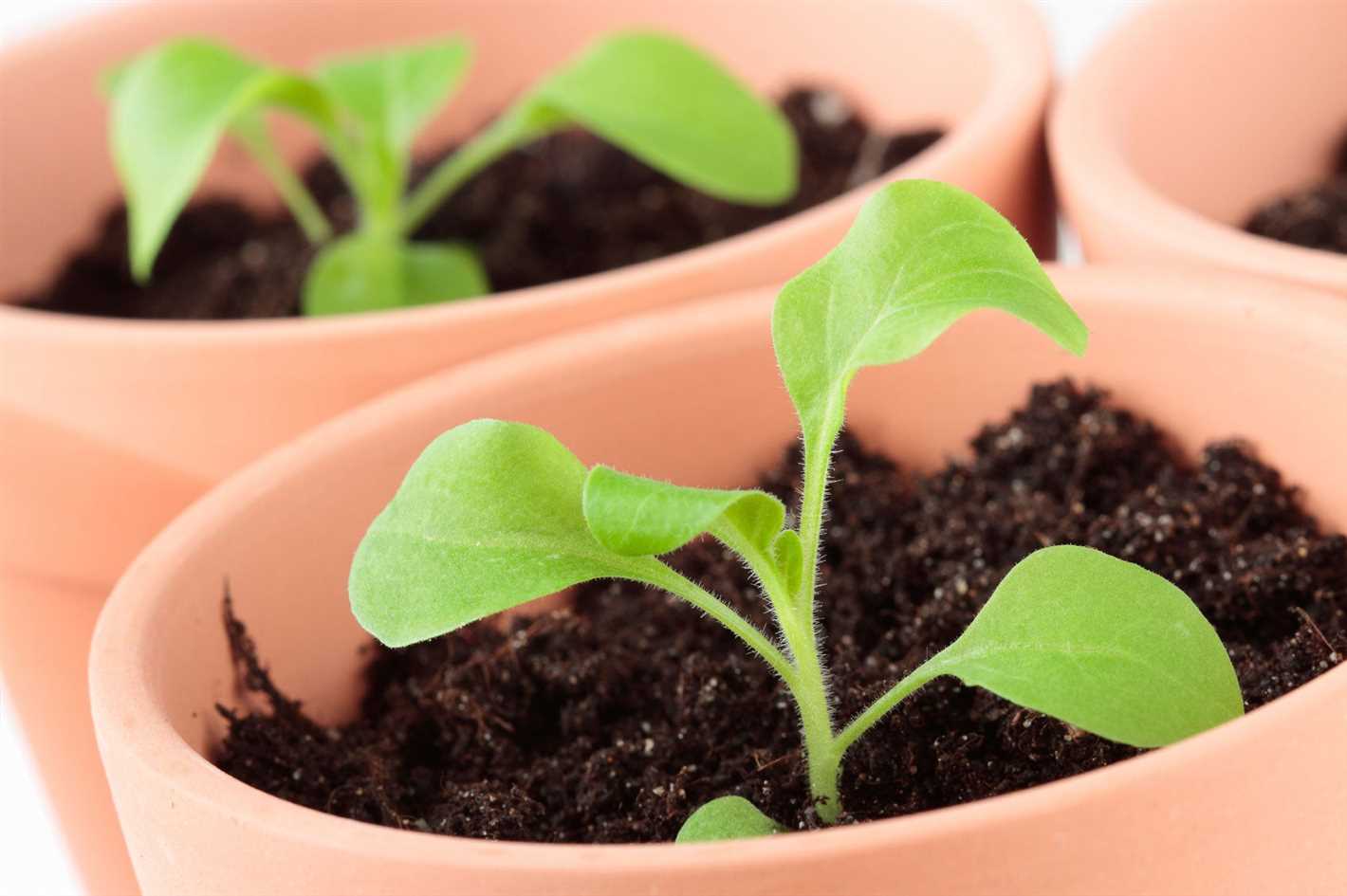
Lastly, consider the quality of the seeds you are purchasing. Look for reputable seed suppliers and check for indicators such as high germination rates and freshness. Quality seeds will give you a better chance of successful germination and healthy seedlings.
By considering these factors when selecting petunia seeds, you can set yourself up for success in growing healthy and beautiful petunia seedlings.
Where to Buy Quality Petunia Seeds
If you’re planning to grow petunia seedlings in 2023, it’s important to start with high-quality petunia seeds. Here are some reliable sources where you can purchase quality petunia seeds:
1. Local nurseries and garden centers
Visit your local nurseries and garden centers to see if they carry a wide selection of petunia seeds. These establishments often have knowledgeable staff who can provide guidance on selecting the right petunia variety for your needs.
2. Online seed suppliers
There are many reputable online seed suppliers that offer a vast selection of petunia seeds. Some popular options include:
- Johnny’s Selected Seeds: This online supplier has a wide range of petunia seeds, including heirloom varieties and hybrid options.
- Park Seed: Park Seed is known for its quality seeds and offers various petunia varieties.
- Burpee: Burpee offers a diverse selection of petunia seeds, including both single-color and multi-colored varieties.
- Seed Savers Exchange: If you’re interested in heirloom petunia varieties, Seed Savers Exchange is a great option.
3. Seed catalogs
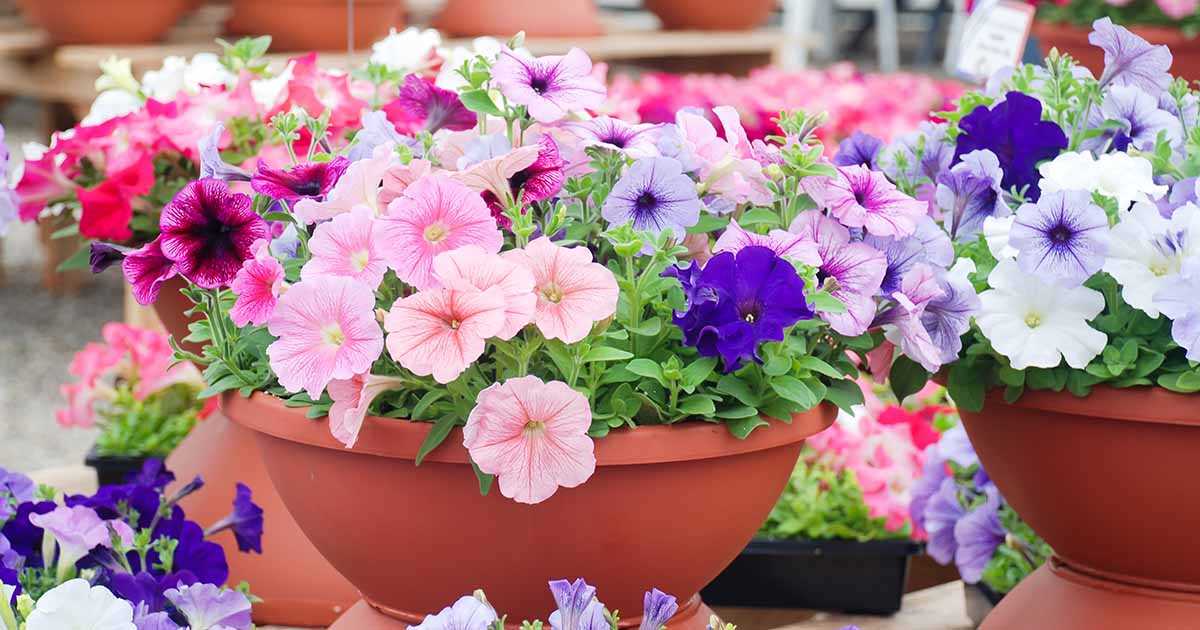
Consider browsing through seed catalogs from reputable companies. These catalogs often provide detailed information about different petunia varieties and growing tips. Some popular seed catalogs include:
- Baker Creek Heirloom Seeds: This company specializes in heirloom seed varieties and offers a selection of petunia seeds.
- Botanical Interests: Botanical Interests offers high-quality petunia seeds, along with detailed planting and care instructions.
- Seed Needs: Seed Needs offers a variety of petunia seeds, including both single and double-flower options.
4. Seed exchanges and gardening forums
Consider joining online seed exchanges and gardening forums to connect with fellow gardeners who may be willing to share or trade petunia seeds. These platforms can be a great way to connect with other gardening enthusiasts and broaden the variety of petunia seeds in your collection.
Remember to always choose reputable sources when purchasing petunia seeds to ensure you’re getting high-quality seeds that will give you the best chance of successful growth and beautiful petunia blooms in 2023.
Preparing Soil for Petunia Seedlings
Choosing the Right Soil
Preparing the soil is an essential step in ensuring the success of your petunia seedlings. The right soil will provide the necessary nutrients and aeration for healthy growth. Here are a few tips for choosing the right soil:
- Loamy Soil: Petunias prefer well-draining loamy soil. This type of soil retains moisture while allowing excess water to drain away, preventing root rot.
- pH Level: Petunia seedlings thrive in slightly acidic soil with a pH level between 6.0 and 6.5. Test the soil’s pH level with a kit, and amend it if necessary using organic matter or soil amendments.
- Nutrient-Rich Soil: To ensure proper growth, the soil should be rich in organic matter and nutrients. Add compost or well-rotted manure to enhance the soil’s fertility.
Preparing the Soil
Once you have chosen the right soil, follow these steps to prepare it for your petunia seedlings:
- Clear the Area: Remove any weeds, rocks, or debris from the planting area to provide a clean and clear space for your seedlings.
- Till the Soil: Use a garden fork or tiller to loosen the soil to a depth of 8-10 inches. This will improve aeration and allow the roots to penetrate easily.
- Add Organic Matter: Incorporate organic matter, such as compost or well-rotted manure, into the soil. This will enrich the soil’s fertility and improve its water-holding capacity.
- Level the Soil: Use a rake or garden hoe to level the soil surface, ensuring an even planting bed for your petunia seedlings.
Additional Tips
- Before planting your petunia seedlings, water the soil thoroughly to ensure proper hydration.
- Consider adding slow-release fertilizer or organic granular fertilizer to the soil for long-lasting nourishment.
- If you are growing petunia seedlings in containers, use a well-draining potting mix specifically formulated for container gardening.
- Regularly monitor the moisture level of the soil and water your petunia seedlings as needed, keeping the soil evenly moist but not waterlogged.
By following these steps to prepare the soil for your petunia seedlings, you will provide them with a healthy foundation for growth and increase their chances of thriving throughout the growing season.
Soil Composition and pH for Petunia Seedlings
Creating the right soil composition and maintaining the proper pH level is crucial for the successful growth of petunia seedlings. Here are some tips to help you create the ideal soil environment:
Soil Composition
- Choose a well-draining soil mix: Petunia seedlings prefer well-draining soil that holds moisture but also allows excess water to flow out.
- Use a soilless mix: A soilless mix, such as peat moss or perlite, provides a lightweight and sterile medium for petunia seedling growth.
- Add organic matter: Incorporating organic matter, such as compost or aged manure, into the soil mix can improve its fertility and water-holding capacity.
pH Level
The pH level of the soil can greatly affect the availability of essential nutrients to petunia seedlings. Here are some guidelines to ensure the optimal pH level:
- Measure the pH: Use a soil pH test kit to determine the acidity or alkalinity of your soil. Petunias thrive in a slightly acidic to neutral pH range between 6.0 and 7.0.
- Adjust the pH if needed: If your soil pH is too high (alkaline), you can lower it by adding organic matter, such as sulfur or peat moss. Conversely, if your soil pH is too low (acidic), you can raise it by adding lime or wood ash.
Additional Tips
Here are a few additional tips to ensure the best growing conditions for petunia seedlings:
- Provide adequate drainage: Ensure proper drainage by using containers with drainage holes or incorporating gravel or sand at the bottom of planting beds.
- Water appropriately: Water petunia seedlings thoroughly, allowing the soil to dry slightly between watering. Avoid overwatering, as it can lead to root rot.
- Fertilize as needed: Petunias are heavy feeders, so regularly fertilize with a balanced, water-soluble fertilizer according to the manufacturer’s instructions.
- Monitor for pests and diseases: Keep an eye out for common pests, such as aphids or spider mites, and signs of diseases. Take appropriate measures, such as using organic pest control methods, to prevent or treat any issues.
By following these soil composition and pH guidelines, you can provide optimal growing conditions for your petunia seedlings, leading to healthy and vibrant plants.
Steps for Preparing Soil for Petunia Seedlings
Proper soil preparation is crucial for the successful growth of petunia seedlings. Follow these steps to ensure your seedlings have the best growing conditions:
- Choose the right soil: Petunias prefer well-draining soil that is rich in organic matter. Use a high-quality potting mix or prepare a soil mix with equal parts of garden soil, compost, and perlite or vermiculite. Avoid using dense, heavy soils that can hold too much moisture.
- Test soil pH: Petunias thrive in slightly acidic soil with a pH range of 5.5 to 7.0. Test the soil’s pH using a soil testing kit available at garden centers. If the pH is too high, add sulfur or acidic organic matter such as pine needles or peat moss to lower it.
- Amend the soil: If the soil lacks organic matter, mix in compost or well-rotted manure to improve its fertility and moisture retention capacity. This will also provide essential nutrients for healthy growth.
- Remove weeds and debris: Clear the planting area of any weeds, rocks, or debris that could hinder water penetration and root growth. This will also help prevent competition for nutrients and resources.
- Loosen the soil: Use a garden fork or tiller to loosen the soil to a depth of around 6 to 8 inches. This will improve soil structure, aeration, and root penetration.
- Level the soil: Smooth out the soil surface using a rake or leveling tool to create an even planting bed. This will provide a uniform surface for seed sowing.
- Moisten the soil: Water the soil thoroughly the day before sowing the petunia seeds. This will help ensure good seed-to-soil contact and promote germination.
By following these steps, you will create an ideal environment for your petunia seedlings to develop strong roots and thrive. Remember to provide adequate sunlight, water, and nutrients as they grow to ensure their healthy growth.
Planting Petunia Seeds
Planting petunia seeds is an easy and rewarding process that can be done by gardeners of all experience levels. By following a few simple steps, you can grow beautiful and vibrant petunia seedlings that will add color and charm to your garden.
Choose the Right Seeds
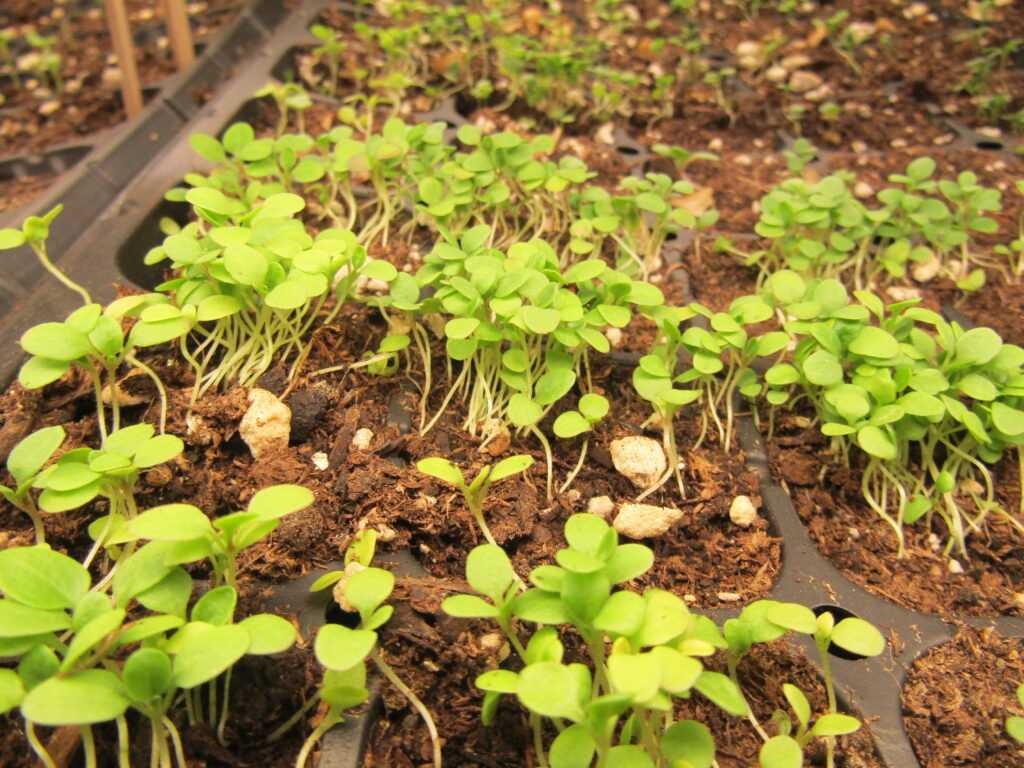
Before planting petunia seeds, it’s important to choose the right variety for your garden. There are many different types of petunias available, including trailing, mounding, and grandiflora varieties. Consider the growing conditions in your garden, such as sun exposure and soil type, when selecting your petunia seeds.
Start Indoors
Petunia seeds should be started indoors about 6-8 weeks before the last frost date in your area. Fill a seed tray or small pots with a high-quality seed starting mix. Moisten the soil before planting the seeds to ensure good germination.
Sow the Seeds
Sow the petunia seeds on the surface of the soil, about 1/8 inch apart. Lightly press the seeds into the soil, but do not cover them with additional soil as petunia seeds need light to germinate.
Provide the Right Conditions
Place the seed tray or pots in a warm and well-lit location, such as a sunny window or under grow lights. Petunia seeds need a temperature of around 70-75°F (21-24°C) to germinate. Keep the soil consistently moist, but not waterlogged, by misting it regularly.
Transplanting Seedlings
Once the petunia seedlings have developed their first set of true leaves, they can be transplanted into larger containers or the garden. Transplant them carefully, making sure to disturb the roots as little as possible.
Care and Maintenance
After transplanting, petunia seedlings should be watered regularly to keep the soil evenly moist. Fertilize them every 2-3 weeks with a balanced liquid fertilizer. Pinch back the tips of the plants to encourage branching and bushier growth. Remove any flowers that start to fade to promote continuous blooming.
Conclusion
By following these simple steps, you can successfully plant petunia seeds and grow healthy and vibrant seedlings. With proper care and maintenance, your petunias will reward you with a profusion of colorful and beautiful flowers throughout the growing season.
When and How to Plant Petunia Seeds
Planting petunia seeds at the right time is crucial for successful growth. Here are some tips on when and how to plant petunia seeds:
1. Determine the Ideal Time
The ideal time to plant petunia seeds is indoors, about 10-12 weeks before the last frost date in your area. This allows the seeds enough time to germinate and develop into healthy seedlings before being transplanted outdoors.
2. Prepare the Growing Medium
Choose a well-draining potting mix or seed starting mix for planting the petunia seeds. Fill a seed tray or small pots with the moistened growing medium, leaving about ¼ inch of space at the top.
3. Sow the Seeds
Sow the petunia seeds on the surface of the growing medium, spacing them about 1 inch apart. Lightly press the seeds into the medium, but do not cover them completely, as petunia seeds need light to germinate.
4. Provide the Right Conditions
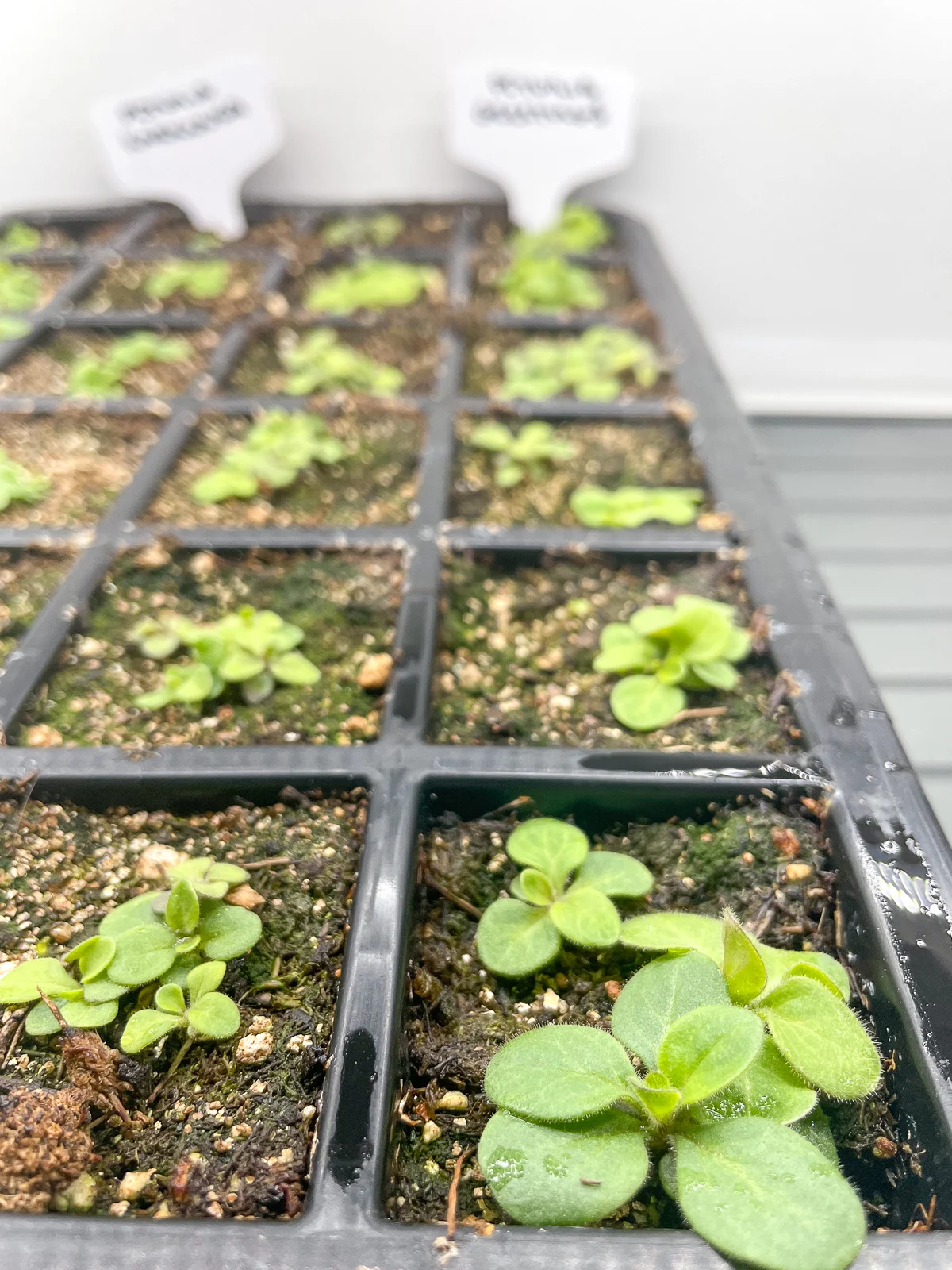
Place the seed tray or pots in a warm location, ideally between 70-75°F (21-24°C), such as near a sunny window or under grow lights. Petunia seeds typically germinate within 7-10 days under these conditions.
5. Watering and Care
Keep the growing medium evenly moist, but not waterlogged. Water the seedlings from the bottom by placing the tray or pots in a shallow tray filled with water and allowing the soil to absorb the moisture. Avoid overhead watering, which can lead to fungal diseases.
6. Transplanting Seedlings
When the petunia seedlings have developed their first set of true leaves, they are ready to be transplanted into individual pots or containers. Use a well-draining potting mix and gently lift the seedlings from the tray, being careful not to damage the roots.
7. Hardening Off and Outdoor Planting
About 1-2 weeks before the expected date of the last frost, begin hardening off the petunia seedlings. Gradually expose them to outdoor conditions by placing them outside for a few hours each day, gradually increasing the duration over the course of a week. Once acclimated, plant the petunia seedlings in a sunny location with well-draining soil.
By following these steps, you can successfully plant petunia seeds and enjoy beautiful, vibrant blooms in your garden.
Questions and Answers:
What are the best petunia seedling varieties to grow in 2023?
In 2023, some of the best petunia seedling varieties to grow include ‘Wave’, ‘Supertunia’, and ‘Shock Wave’ petunias. These varieties are known for their vibrant colors, compact growth habits, and long flowering seasons.
How do I start petunia seedlings indoors?
To start petunia seedlings indoors, you should first sow the seeds in a tray or individual pots filled with well-draining seed starting mix. Keep the seeds moist, provide plenty of light, and maintain a temperature of around 70-75°F (21-24°C). Once the seedlings have grown a few sets of leaves, they can be transplanted into larger containers or into the garden.
What are some common mistakes to avoid when growing petunia seedlings?
When growing petunia seedlings, it is important to avoid overwatering, as this can lead to root rot and other issues. It is also important to provide enough light for the seedlings and to avoid overcrowding them, as this can lead to poor air circulation and increased risk of disease. Additionally, it is important to harden off the seedlings before transplanting them into the garden, to help them adjust to the outdoor conditions.
Can I use a seedling heat mat to help germinate petunia seeds?
Yes, using a seedling heat mat can help to improve germination rates for petunia seeds. Petunia seeds typically germinate best at temperatures of around 70-75°F (21-24°C), and a heat mat can help to provide consistent warmth to the seeds, promoting faster and more uniform germination. Just be sure to monitor the temperature and adjust as needed to avoid overheating the seeds.
How long does it take for petunia seedlings to bloom?
The time it takes for petunia seedlings to bloom can vary depending on the variety and growing conditions. In general, petunia seedlings can start blooming in about 8-10 weeks from sowing the seeds. However, some varieties may bloom earlier or later, so it is important to refer to the specific instructions for the variety you are growing.







